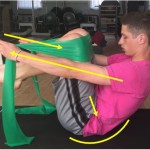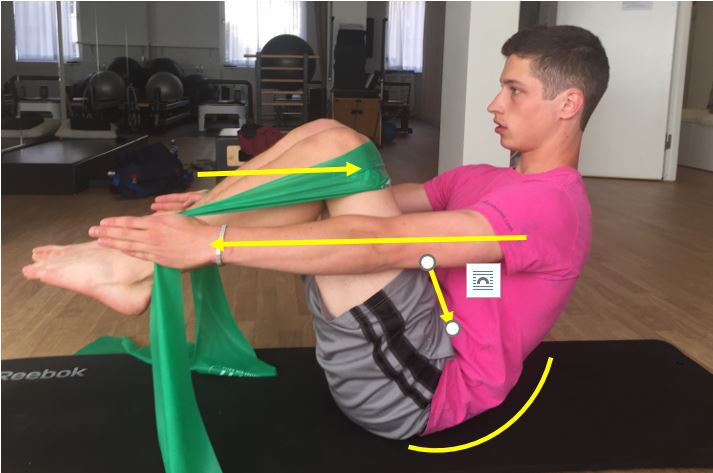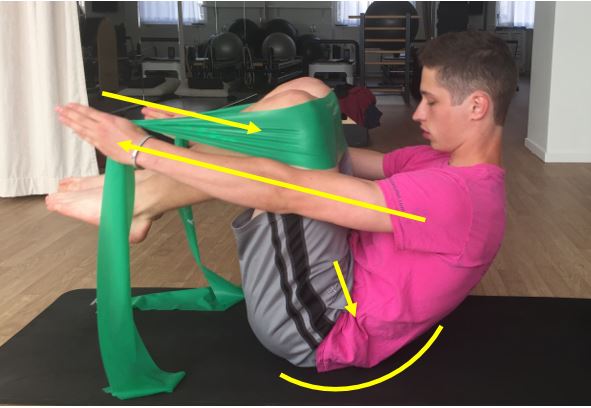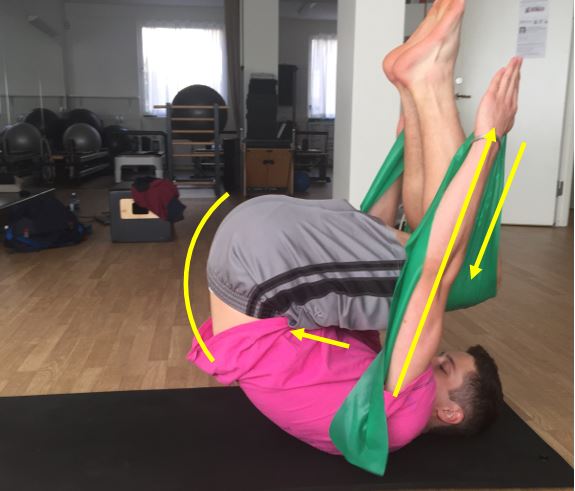I think that most of us know the general frustration in our community over the fact that Pilates is often bent and twisted into something that is unrecognizable, but branded with that buzz-word ‘Pilates’ and hustled out to an unknowing public. Most are also aware that within our industry there exists acrimonious schisms and turmoil over what exactly what Pilates is. It is a hard question, but one worthwhile to perhaps take bit by bit.
Recently I was reading the following in a very popular Pilates blog post wherein the intention was to help educate the public as to just what Pilates is:
“Equipment. This is simple. If you have a Pilates-Mat practice only, there is no equipment sanctioned by Pilates people other than a Mat, light weights, and a Magic Circle. Additional props like balls, bands and foam rollers are not Pilates, and never have been. The Mat is a body-weight routine. You don’t need anything else to make it effective.”
My aim here is not to denigrate a very worthy endeavor to educate Just as it washere and here and here, I aim to rigorously challenge my colleagues, using reason and keen observation so that we can base our views on logic and fact wherever possible. Accepting the authority and tradition of the ‘Pilates people’, as the reader is exhorted to do above, is simply not good enough.
(Side note: I am confident that in response to this article I will receive letters expressing offense, and also praise for the courage that I have in writing this. Does it really take courage to be open, rigorous and reasonable in the Pilates community? Why yes it does, sadly, a symptom of the lack of confidence in our industry that suppresses the evolution of intelligence. A cursory glance at history quickly shows there is nothing original in this phenomena…. but an article dedicated to this alone awaits another day.)
Let’s be specific, the light weights, and a Magic Circle are in Pilates because they provide a greater resistance while altering the challenge of the exercise, providing valuable feedback about how to do the work. For example, placing the Magic Circle between the legs while doing The Hundred helps one understand the inner thigh engagement required for maximal support, valuable info carried into those times when the Circle is not used.
Contrary to the ‘Pilates people’ (who are they?), I think that additional equipment, when used well, CAN be Pilates, and CAN make it more effective.
What is needed for the discussion over the validity of my statement is a well-reasoned, specific example that we can talk about intelligently and without emotion. I have several, but choose here the flex-band in a specific exercise.
Rolling Like a Ball is a challenging exercise to teach. I find it difficult to convey that during the roll, an active abdominal support should be maintained by constantly renewing an ‘in and up’ action of the deep abdominal muscles (or scooping, a phrase I avoid). After repeatedly demonstrating this active renewal of abdominal support in action, the results are often unsatisfactory. For many students, that abdominal support of ‘in and up’ is in place directly before the rolling action. But rather than initiating the roll by deepening into a C-curve, the opposite occurs wherein the back straightens and the student will lean back into an unsupported roll, sometimes with a good “SPLAT!”. The ‘in and up’ support is then reinstated upon return to the up position. As a teaching tool I have found the following flex band exercise to successfully convey the deeper experience that I am after. (I created the exercise but of course others may have come upon the same – no claim to ownership is made here).
1. Balance in a seated a C-curve position, and place the flex band in front of the thighs, just below the top of the knee. Hold the flex band on both sides.
2. Using the deep ‘in and up’ action of the abdominals, pull the thighs into the torso, against the flex band, while simultaneously stretching the arms forward and away from the body. The resulting stretch of the flex band provides resistance for the thighs to push against. This action should increase the C-curve of the torso.
3. Maintain balance in the deepened C-curve in the up position (ie don’t roll). Slowly bend the arms back in toward the body, and release the thighs away from the torso somewhat, lessening the C-curve and the ‘in and up’ action — but not totally releasing it (ie, back to starting position).
4. Repeat steps three and four 3-5 times, still without rolling.
When ready….
5. Repeat step 3…and then INCREASE the outstretched arms and pulling action of the thighs inward, allowing the resulting deeper C-curve to initiate the roll!!
6. Maintain arms out, thighs moving in against the flex band until in the upright position…. Release slightly, and repeat.
Voila, the feedback from the flex-band helps the student to understand that subtle, yet powerful, engagement of the abdominals while in action! In my experience this is a very effective teaching tool, and have heard many students express a lovely “a-ha, now I start to understand!”.
Do we all agree that the greatest aspect of Pilates is the endless journey in discovering the depth of the technique? This exercise can be a great tool to set people further along their path of discovery.
So, that was my example — specific and reasoned. I know with certainty that the ‘Pilates people’ do not agree with me…which is great. But my question to the ‘Pilates people’, or anyone is…. Can you provide an unemotional, well founded argument (ie, NOT the Orwellian “Because it is not sanctioned by an unidentifiable authority”) why this specific use of the flex band is NOT Pilates?
Is it perhaps because it is not possible my example can convey a greater understanding of the work?
If my example CAN give a greater understanding of the work, why is it then not Pilates?
I am fully open to reasoned answers, and very willing to change my mind. I am happy to publish any intelligent point of view counter to my own. But if no such argument comes, then we, as reasoning and intelligent professionals, will have to accept that it is possible that more equipment than small weights and a Circle CAN be a part of Pilates.
Big thank you to my son Evan for being a good sport and a great model!





